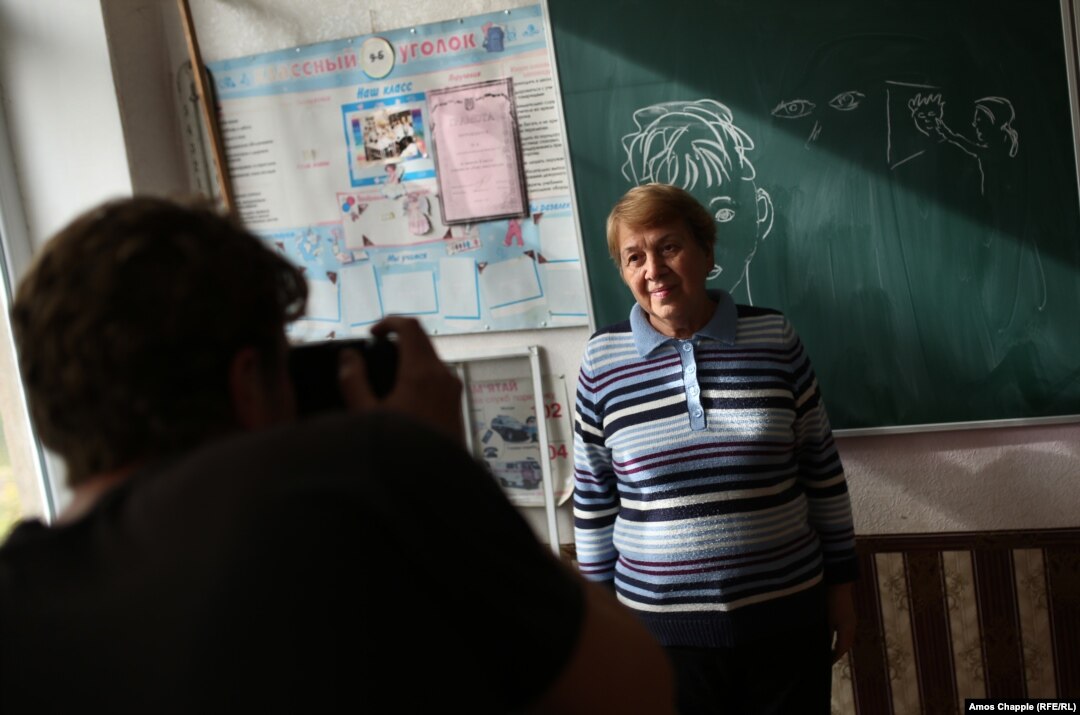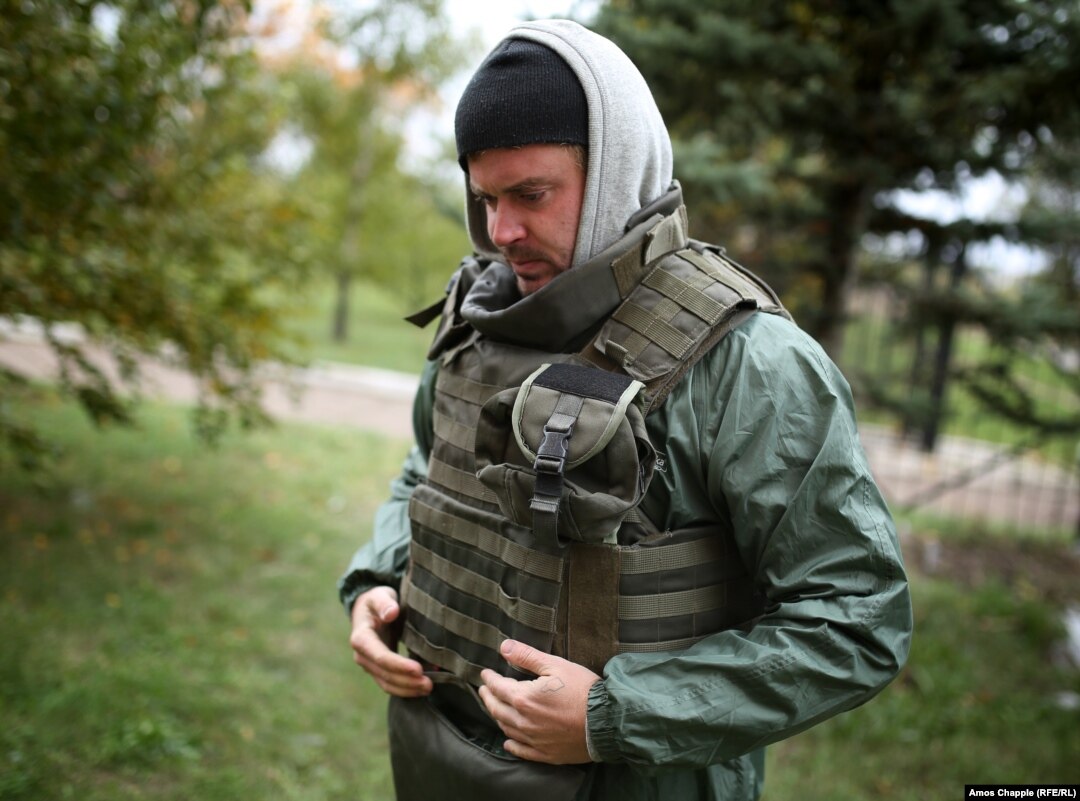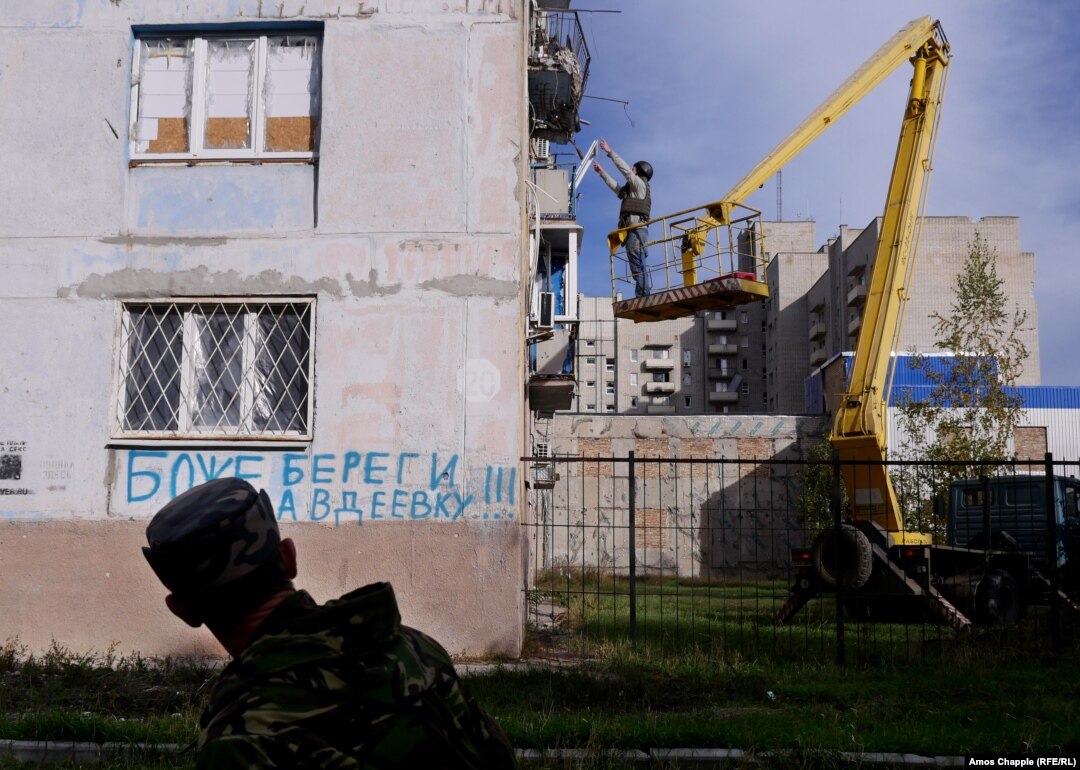The Frontline Artist

Wearing a flak jacket and ballistic helmet, Guido van Helten nears completion of his portrait of a local woman.

The day before, van Helten had visited a local school to photograph Marina Marchenko, whom he chose after seeing a photograph of the 73-year-old teacher. "I could just see the kindness in her eyes...I want my work to have a local identity."

After choosing a building that faces the front lines, van Helten backs out after being told the separatists would be able to see the position. Finally, after a search for another suitable wall proves fruitless, he agrees to work at the building. It is the Australian's first time in a conflict area.

A Ukrainian soldier walks past as van Helten is lifted into position. The graffiti, in Russian, reads "God Save Avdiyivka."
Around 100 meters from the site van Helten has chosen for his mural, cars moving through the area are screened at a Ukrainian military checkpoint.
Work begins on the portrait. Van Helten says he does not intend the work to be a political statement. "Who am I to make a statement about a complex situation like this?.... Honestly though, I reckon if I went to the other side I would see just the same thing, the same kids in the classrooms.... This isn't about good and evil."
Damage from an artillery or tank round above where Van Helten works. The building has stood empty since 2014, after a Grad (Hail) rocket landed in one of the apartments, killing two civilians inside.
Van Helten says he had long put off the project, an idea conceived by Kyiv art collective Art United Us, because he feels uncomfortable with "this daredevil thing in street art now where it's all about the biggest, the most dangerous or whatever."
Van Helten using his cellphone as a guide while he paints. The artist says he eventually agreed after feeling "kind of down" while working on an assignment in Finland. "I just thought, as long as people don't see it [as a daredevil thing] then only good can come out of it."
"These people have probably never seen anything like this.... If I can give them something to think about that isn't war -- even for a moment, then it's worth it."
A woman looks up as the mural takes shape. The reactions were mostly positive -- one soldier told van Helten: "I love you!" -- but two locals wondered why the equipment wasn't being used for repairs to the wrecked apartments. One elderly woman said, "There's a hole in my roof, the rain is coming through, and you're here just painting? Boys, it's not right".
Twenty-four shades of gray which are used for the mural. Van Helten says "there is this idea that art is this valuable thing and money has to be spent on it, but for projects like this I'm not charging anything, it's just my time." Geo Leros, from Art United Us, says that the paint, travel, and rental of the lift was paid for by private sponsors.
Van Helten pauses after a heavy explosion nearby. On both days van Helten worked on the mural, the boom of mortars and rattle of machine-gun fire began in the late afternoon. Shortly after this picture was taken van Helten asked, "If [the separatists] were to like, break the line or something...we'd know about it, right?"
Although told he is out of range of snipers, van Helten waits until after dark to paint the highest, most exposed parts of the mural.
After day one he insists on not celebrating. "I just need to concentrate on A -- making the rest of it look good, and B -- not dying."
A neighboring apartment block that took a direct hit from a Grad (Hail) rocket in 2014.
As rain and mortar shells fall, van Helten walks to the end of the road to check the painting.
The finished portrait. Van Helten's work has been a huge boon for some small towns. By the time he left Avdiyivka, locals were beginning to gather and photograph the artwork.

